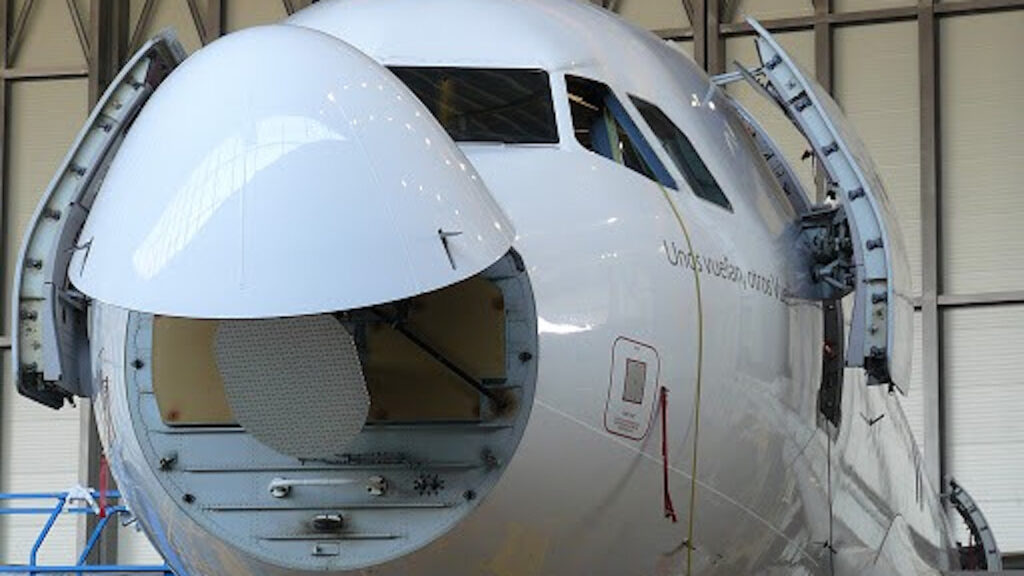The intersection of aviation and technological advancement always gives birth to intriguing revelations. One such curious element sits quietly within the aerodynamic shell of an airplane – its nose. Ever wondered what it holds within? Let’s embark on a journey of discovery.
Understanding radomes: More than just a nose
Often referred to as the ‘nose’ of an aircraft, the bulbous structure at the front end, known as a ‘Radome,’ is a true testament to technological sophistication. Crafted from composite materials, this aerodynamic dome safeguards intricate machinery from extreme weather, while enhancing the aircraft’s overall aerodynamics.
As you pry open a Radome, a metallic, sheet-like radar antenna welcomes you. Encased in its cocoon, the antenna enjoys unhindered operations, courtesy of the Radome’s specialized construction materials and distinct paint, which ensure seamless transmission and reception of electromagnetic signals.
Unfolding the tasks of the hidden radar
The resident radar in the aircraft’s nose juggles dual responsibilities:
As a weather radar, it pinpoints areas of atmospheric precipitation along the flight path. Simultaneously, it functions as a Ground Proximity Warning System (GPWS), constantly monitoring the terrain beneath. The weather radar’s data allows pilots to dodge adverse weather, ensuring a smooth flight for passengers. The GPWS, meanwhile, alerts pilots through auditory and visual signals if the aircraft strays too close to the ground or faces a potential collision risk.

In the realm of aviation, history is equally compelling as its future. Let’s take a moment to pay homage to the first airplane of Turkish Airlines, the Curtiss Kingbird, fondly known as the 94-year-old TC-KUŞ.
The hidden tenants of the airplane’s nose
The Radome shelters more than just the radar antenna. Other occupants include antennas known as the “localizer and glideslope.” These antennas orchestrate the automatic landing process, or the Instrument Landing System (ILS), maintaining stability during descent. These signals come with high radiation levels, mandating stringent safety measures during maintenance routines.
Moreover, the Radome’s surface is adorned with stripe wires, designed to form a Faraday cage, providing essential protection against frequent lightning strikes.
Were you familiar with the critical systems nestled within an aircraft’s nose? Feel free to share your thoughts and insights below!













